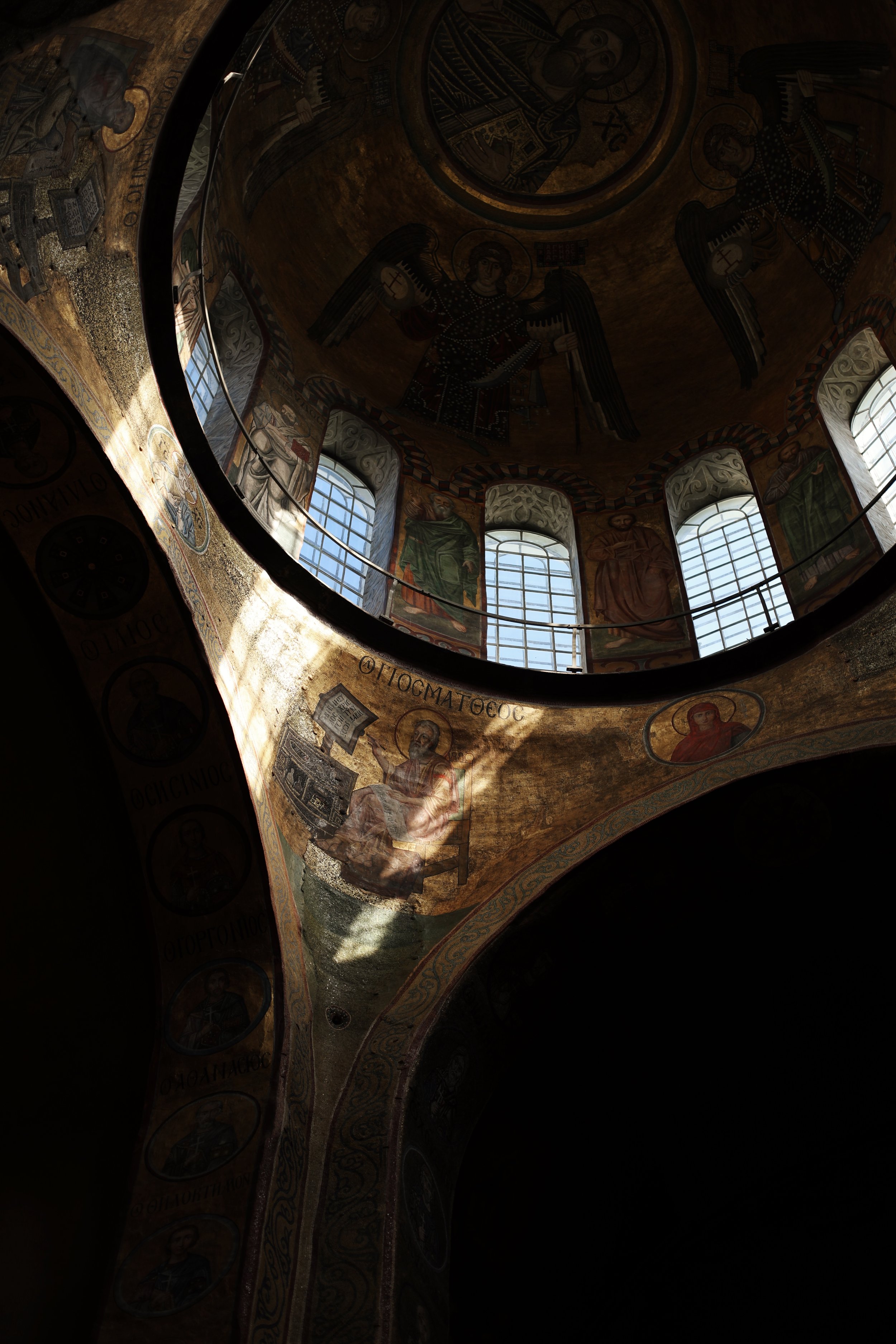St. Sophia Cathedral. Kyiv, Ukraine.
Amid the Russian invasion of Ukraine, I want to talk about what unites the nation - its heritage. The Russian military has already destroyed many historical buildings, churches, destroyed many Ukrainian cities. This makes me think of one of the most valuable architectural treasures of the country - the cathedral of St. Sophia. It turned 1010 years old in 2021. There are over one thousand cathedrals in Kyiv, and this St. Sophia is the oldest one standing. The exterior was rebuilt many times, and considering all the wars Kyiv went through, it’s a miracle some of the interior managed to survive. There are actual paintings and building materials from the XI century, and I was lucky enough to visit the cathedral in September 2021, and now I can share some photos with you. The essay revolves around the aesthetics of the cathedral, the exhibition of the first written Ukrainian constitution, and the roots of Ukrainian heritage.
The essay is at the end of the series.
The main dome.
260 square meters of mosaics and 3 thousand square meters of frescoes of the 11th century have been preserved.
According to legend, this mace (Bulava) was inherited by Pylyp Orlyk from Hetman Ivan Mazepa, end of the XIV century. Iron, silver plate, gilding.
Main hall interior.
Model of the XI century version of the cathedral
Model of the contemporary version of the cathedral
The tomb of the Grand Prince of Kyiv - Yaroslav the Wise, who died in 1054 and buried in St. Sophia Cathedral.
"Glory; Humility: Purity; Love; Hope"
Pylyp Orlyk's Constitution, 1710, constitutional document written by elected Hetman of Ukraine, Pylyp Orlyk.
When Mazepa died on 5 April 1710, Pylyp Orlyk was elected as the Hetman of the Zaporizhian Host. He issued the Pacts and Constitutions of Rights and Freedoms of the Zaporizhian Host on the same day.
"Bulava" was an attribute of a hetman, an officer of the highest military rank. End of the XIV centiry.
Another symbol of power in Ukraine.
Bell tower.
Bell tower
View on Volodymyrska street and St. Michael's Golden Dome Monastery.
History, legends, and reality.
There is no exact date as to when Kyiv was founded.
There are definitely quite a few legends, and I, for example, adore the one about brothers Kyi, Shchek, Khoryv, and their sister Lybid', who founded Kyiv in the VI-VII centuries. There is some historical evidence that this theory might be a fact rather than a legend, but no one has proven it yet.
Otherwise, we know for a fact that the permanent settlements in this area appeared in the VI century and took their final form somewhere in the late 800s. At least, this is the earliest we know for Kyiv to be mentioned in written documents. By the late X century, supposedly year 988, Kyiv and its subordinate lands got officially converted to Christianity by Volodymyr the Great. There were quite a few tries to turn Slavic pagans into Christians before him, but no one succeeded. Even when Volodymyr christened people in Kyiv, and the churches and cathedrals started to pop up like mushrooms throughout the country, many people followed pagan rituals for centuries after. Volodymyr put the foundation to the Saint Sophia Cathedral. It took over 2 decades to finish the construction, and the Cathedral was completed by Yaroslav the Wise in 1036, Volodymyr's son. By that time, Kyiv was a city with over 50000 population, more extensive than London, Roma, or even Venice of the XI century. It was a blooming capital with a well-developed economy, investments in culture and education, and stable international relationships. Kyiv was a center of the Slavic world, capital of Kyiv's Rus since IX century, and people called it "Mother of Rus' cities." You must understand, though, that while Kyiv's Rus was a vast area covering modern Ukraine, Belarus, and some of Western Russia, there was no Moscow just yet, and the baltic tribes of Belarus were under Kyiv's rules.
Besides photographs of the Cathedral itself, you can also see a couple of photos of the first Ukrainian constitution issued by Pylyp Orlyk in 1710, when he was elected as the Hetman. It established the principle of the separation of powers in government between the legislative, executive, and judiciary branches well before the publication of Montesquieu's Spirit of the Laws. The document limited the executive authority of the Hetman and established a Cossack parliament called the General Council (General Rada, nowadays Verkhovna Rada). The council was to consist not only of the general staff and the regimental colonels but also of "an outstanding and worthy individual from each regiment." Articles protected the rights of towns, limited the taxation of peasants and poor Cossacks, and restricted the innkeepers. In the introduction to the constitution, Ukraine's independence from Russia and Poland was stipulated as a precondition. Charles XII of Sweden, who was present at the time, confirmed these articles as "the protector of Ukraine."
St. Sophia Cathedral is undeniably one of the most culturally significant monuments for the Slavic world. But more than that, it represents something more personal, the only still existing place where the whole nation was formed, the transitioning portal in history from paganism to Christianity, from separateness to unity, from legends to documented history. It's heartbreaking to think it flourished only for a few centuries before the neverending fight for freedom started. But this is partly why Ukrainians share this collective unconscious will and stamina to fight for their freedom.



























